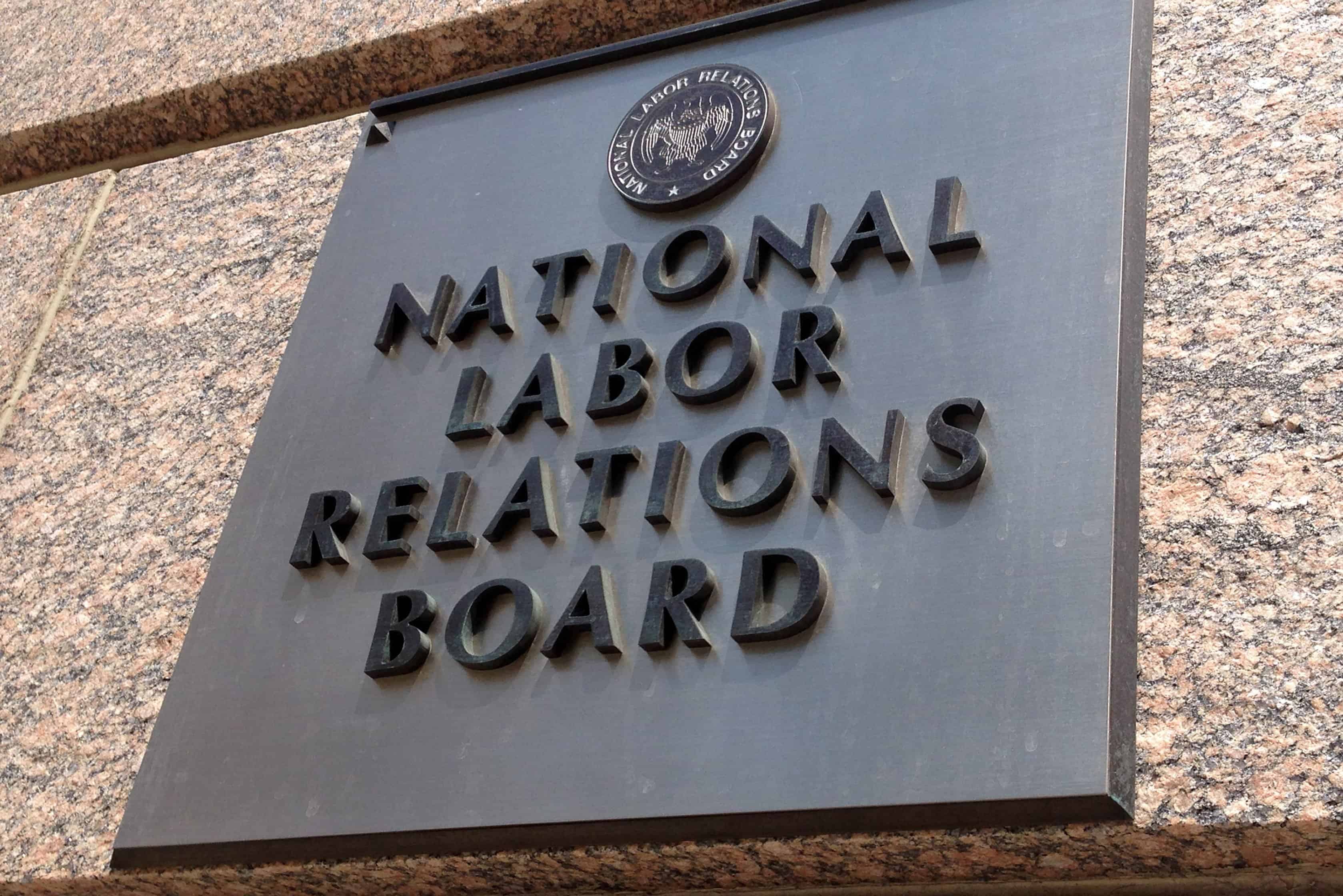
Sharon Block is a Professor of Practice and the Executive Director of the Center for Labor and a Just Economy at Harvard Law School.
Today, the National Labor Relations Board issued a proposed rule to change its joint employer standard. The proposed rule is the latest step in the Trump Board’s tortuous path to achieving its goal of replacing the Obama Board’s Browning Ferris Industries decision with a significantly narrower interpretation of joint employer doctrine.
Background: In 2015, the Obama Board issued its decision in Browning-Ferris Industries, a major re-articulation of the Board’s standard for when companies can be held responsible for labor violations by other companies. The Board held that common law principles supported considering two entities to be joint employers based not only the exercise of actual control over workers’ terms and conditions of employment, but also indirect control or reserved authority. Browning-Ferris was at the top of every list of cases expected to be overturned by the Trump Board. On the eve of former Chairman Phil Miscimarra’s departure in December 2017, the Trump Board majority issued its decision in Hy-Brand, reversing Browning-Ferris and returning the Board to a standard that required proof that an employer exercised direct and immediate control in a manner that it is not limited or routine.
The Hy-Brand decision didn’t last long, however. The Board vacated the decision a couple of months later because of a finding by the Board’s Inspector General that Member Bill Emanuel should have recused himself from participation in the case. While Browning-Ferris went back to the D.C. Circuit for review, in May the Board announced its intention to address the joint employer issue through rulemaking instead of adjudication in May.
Proposed Rule: In light of the sneak peek into the Board majority’s thinking afforded by Hy-Brand, there was not much suspense about what would be in the proposed rule issued yesterday. In fact, the Board majority essentially imported its decision in Hy-Brand into a new regulation. The rule proposes that:
an employer may be considered a joint employer of a separate employer’s employees only if the two employers share or codetermine the employees’ essential terms and conditions of employment, such as hiring, firing, discipline, supervision, and direction. A putative joint employer must possess and actually exercise substantial direct and immediate control over the employees’ essential terms and conditions of employment in a manner that is not limited and routine.
This proposed standard is almost verbatim the same standard articulated in Hy-Brand, which was, in fact, the same standard for which the dissent argued in Browning-Ferris. The one deviation is the addition of the qualifier “substantial” in describing the quantum of direct and immediate control that the General Counsel will need to prove to establish joint employer status. The majority doesn’t explain its reasoning for adding “substantial” and so it is unclear whether it carries much meaning or not.
The majority treads much of the same ground covered in Hy-Brand, explaining why it believes that the Browning-Ferris standard was wrong as a matter of law and policy. As a matter of law, the majority argues that the Browning-Ferris “relaxed” standard was rejected by Congress in the Taft-Hartley amendments to the Act and that requiring “direct and actual” control is consistent with the Supreme Court’s interpretation of common law joint employer principles. As a matter of policy, the majority asserts that the proposed, more stringent standard will “foster predictability and consistency” and “thereby promot[e] labor-management stability.”
The Dissent: Member Lauren McFerran, now the lone Democratic appointee to the Board, issued a strong dissent questioning the majority’s motive, process, legal analysis and policy objectives. In a tweet providing a link to the proposed rule the day before it appeared in the Federal Register, McFerran noted that the “majority’s effort to overrule BFI via rulemaking after prior missteps in adjudication is troubling. Their failure to ground their proposed rule in the common law or the policies of the NLRA is even more problematic.” She defends the legal validity of the Browning-Ferris test and argues that the proposed rule’s standard is inconsistent with common law principles, noting that the Restatement (Second) of Agency uses words like “attenuated” to describe the possible nature of control needed to find a joint employer relationship and recognizes that a finding may be based on a “right to control” as opposed to control that has been exercised. McFerran also argues that the standard in the proposed rule conflicts with the statutory purpose of the Act. McFerran accuses the majority of thwarting the Act’s statutory goal of promoting the practice of collective bargaining and “invit[ing] disruptive economic activity.” Finally, she questions the majority’s sincerity in reviewing public comments and predicts that an honest assessment of the record may show the majority’s justification for the proposed rule to be “empty rhetoric.”
Analysis: A careful reading of the proposed rule and dissent reveals little that hasn’t been said in the Browning-Ferris/Hy-Brand saga. What I found most interesting is the conflict between the majority and dissent about the purpose of the Act. Both the majority and McFerran acknowledge that Congress intended to minimize disruptions to commerce and promote labor-management stability. They differ fundamentally about how to effectuate those goals. The majority narrowly focuses on the efficient functioning of a particular firm. It puts a high policy premium on simplifying firm management by narrowing the universe of who needs to be at the bargaining table and whose interests must be considered at the table. As the dissent points out, the majority admits that a result of its proposed rule, if adopted, would be to have fewer joint employment relationships. I think it is fair to ascribe to the majority a willingness to have less collective bargaining in order to make it easier for employers to exert control over their businesses. The last step in the majority’s policy analysis is to equate greater management control with a more efficiently operating economy.
The dissent, not surprisingly, has a very different perspective. The dissent posits that Congress has already answered the question of what will create a more efficiently operating economy and that answer, as articulated in the Act, is “encouraging the practice and procedure of collective bargaining.” In short, the answer is more collective bargaining is better for the economy than less. Operating from this conclusion, the dissent argues that the goal should be a standard that leads to an overall increase in findings of joint employer status, even if that means that in specific relationships there is some uncertainty or inefficiency in doing the work of figuring out where the joint employer line should be drawn. (Andrew Strom noted in a previous OnLabor post that even this level of “uncertainty” allegedly created by Browning-Ferris standard is “phony.”)
As business models continue to evolve in ways that have the effect (and often the purpose) of blurring the lines between employers and complicating commercial relationships, this question of what the Act views as promoting commerce will continue to come into play in establishing Board standards. A narrow, transactional analysis will inevitably lead to policy outcomes that minimize collective bargaining. But a broader view, like the one reflected in the Act’s preamble and McFerran’s dissent, will lead to policies that expand the empowerment and dignity of collective bargaining for more American workers.






Daily News & Commentary
Start your day with our roundup of the latest labor developments. See all
July 9
In Today’s News and Commentary, the Supreme Court green-lights mass firings of federal workers, the Agricultural Secretary suggests Medicaid recipients can replace deported farm workers, and DHS ends Temporary Protected Status for Hondurans and Nicaraguans. In an 8-1 emergency docket decision released yesterday afternoon, the Supreme Court lifted an injunction by U.S. District Judge Susan […]
July 8
In today’s news and commentary, Apple wins at the Fifth Circuit against the NLRB, Florida enacts a noncompete-friendly law, and complications with the No Tax on Tips in the Big Beautiful Bill. Apple won an appeal overturning a National Labor Relations Board (NLRB) decision that the company violated labor law by coercively questioning an employee […]
July 7
LA economy deals with fallout from ICE raids; a new appeal challenges the NCAA antitrust settlement; and the EPA places dissenting employees on leave.
July 6
Municipal workers in Philadelphia continue to strike; Zohran Mamdani collects union endorsements; UFCW grocery workers in California and Colorado reach tentative agreements.
July 4
The DOL scraps a Biden-era proposed rule to end subminimum wages for disabled workers; millions will lose access to Medicaid and SNAP due to new proof of work requirements; and states step up in the noncompete policy space.
July 3
California compromises with unions on housing; 11th Circuit rules against transgender teacher; Harvard removes hundreds from grad student union.